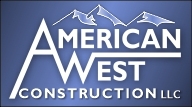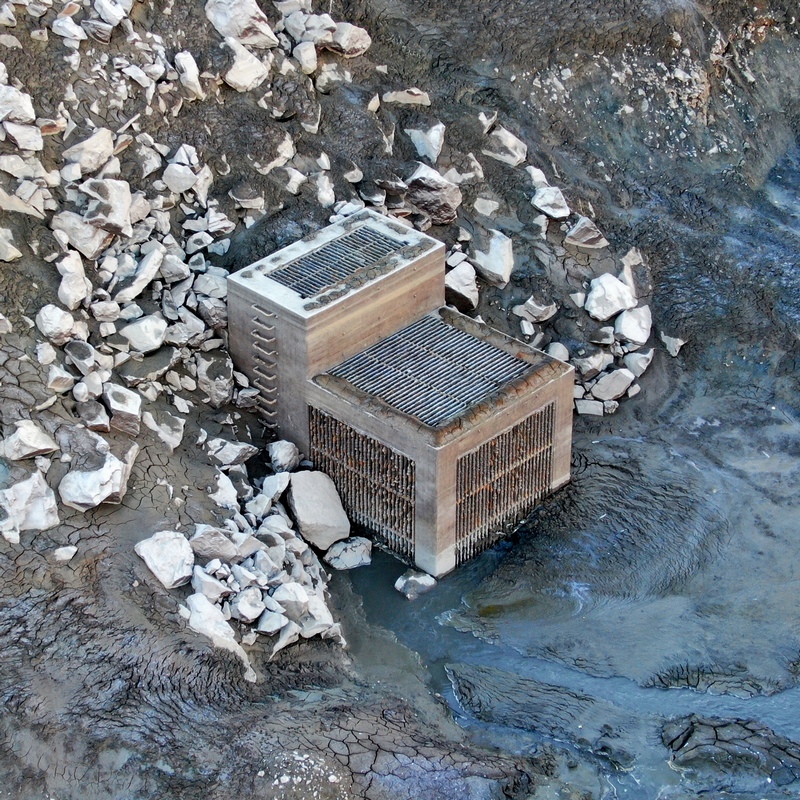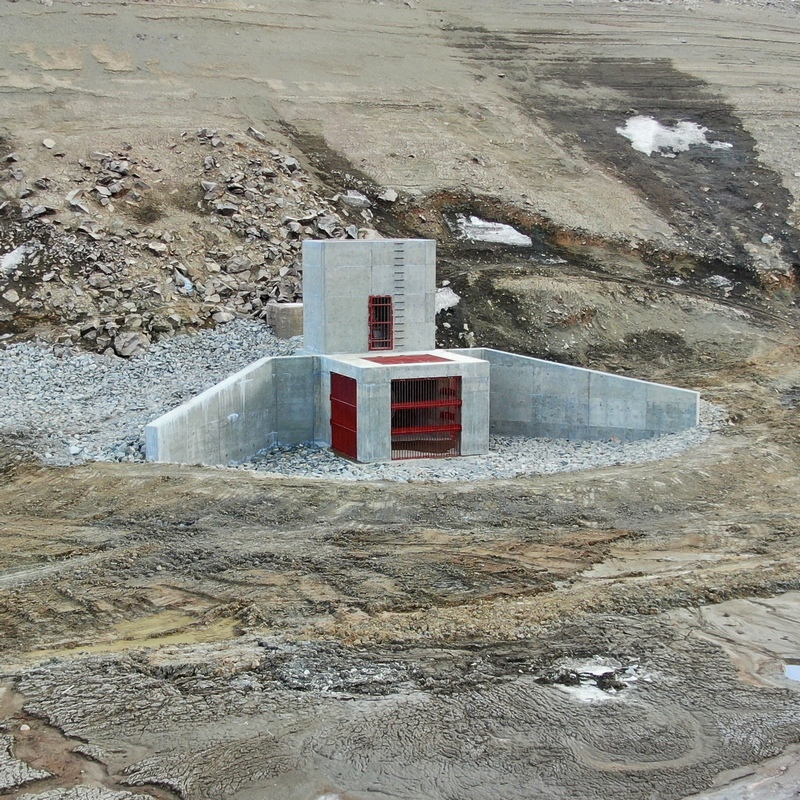
We take great pride in our extensive expertise in dam rehabilitation and are committed to providing top-tier dam rehabilitation services, ensuring the safety and functionality of vital water management infrastructure. Our portfolio of completed projects demonstrates our technical expertise, problem-solving capabilities, and commitment to delivering high-quality results.
West Cooley Reservoir
Location: Henderson, Colorado
Client: City of Thornton
The project focused on repairing the three-earth fill embankment reservoir walls that were breached during the 2015 floods. Key tasks included the repair of the existing soil bentonite barrier wall and the completion of a 90-day leak test to meet the State Engineers Office’s standards. To protect the site during the high runoff season, a coffer dam was constructed. Sediment deposited in the reservoirs from the flood was removed to restore the original capacity. The interconnect vaults between the central reservoir cell and the south cell were repaired to ensure proper functionality. An alluvial well that was destroyed in the flood was reinstalled to maintain water supply. To mitigate future flood risks, multiple grouted riprap spillways and concrete cutoff walls were constructed. The project also included the revegetation of the 8-acre site, which involved planting 2,000 shrubs and 500 willows to stabilize the soil and restore the natural habitat.

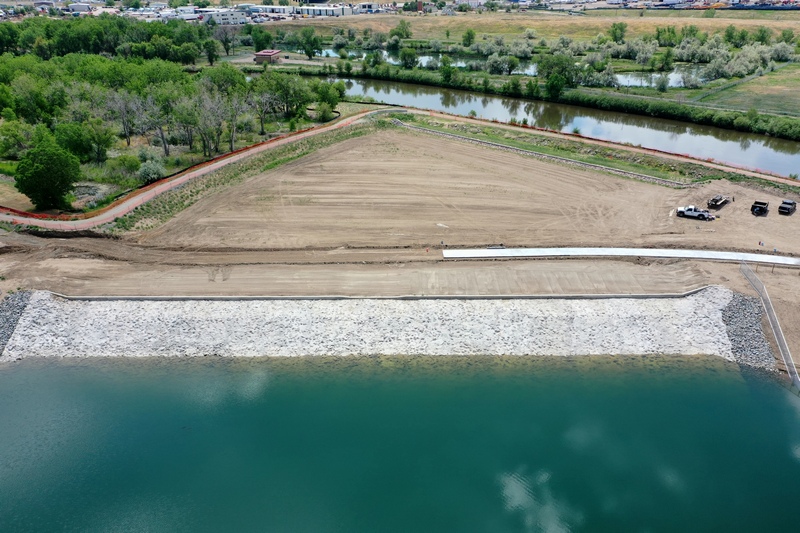
Ralston Reservoir Dam Upstream Control Renovation
Location: Golden, Colorado
Client: Denver Water
The work included installing owner-furnished 66-inch and 6-inch knife gate valve assemblies and a Hydraulic Power Unit Skid. The existing 4-foot by 5-foot cast iron slide gate was refurbished. The project decommissioned the existing 30-inch concrete and steel Auxiliary Outlet Pipe and constructed a new Outlet Works Intake Structure upstream of the existing intake. Hydraulic lines to the knife gate valves and slide gate were furnished and installed, along with electrical and controls work to integrate the Hydraulic Power Unit. The existing Outlet Works Intake Structure and Pivot Valve Vault were decommissioned. Additionally, rock scaling and stabilizing measures were implemented on the right abutment and access road. Temporary construction controls, such as access roads, dewatering systems, and cofferdams, were constructed and removed as necessary.
Trout Lake Dam Siphon Spillway Repair
Location: Ophir, Colorado
Client: Xcel Energy
The spillway siphon tubes required welding and grouting repair due to the failure of existing welds in the piping. These repairs were essential to ensure the functionality of the spillway in the event of lake flooding. In their damaged state, the siphons were not functioning properly and were allowing washout of dam embankment material, posing a risk of dam failure. This repair was reviewed and supported by the Colorado State Division of Water Resources – Dam Safety Branch and was recommended for completion in 2020.
The work involved cutting, grinding, or otherwise removing failed weld material and surrounding damaged areas. Backer plates were welded in place, and like-and-kind replacement material was fitted and welded at all failed and repaired weld joints. Grout injection ports were installed along the pipe alignment to allow for grout injection between the siphon pipe and embankment fill. After grout application, the siphon grout injection ports were welded closed. All welds were full penetration welds. Upon completion of welding and grouting activities, an approved coating material was applied to the weld repair areas and other designated areas. The work was performed underground in the siphon tube, with varying diameters (60” to 72”) and interior configurations. Primary ingress and egress were from the North end of the pipe, with secondary ingress and egress from the South end. The work area was considered a confined space.
A change order included internal bracing of the siphon tubes to safely complete grouting of the annular space between the tubes and embankment.
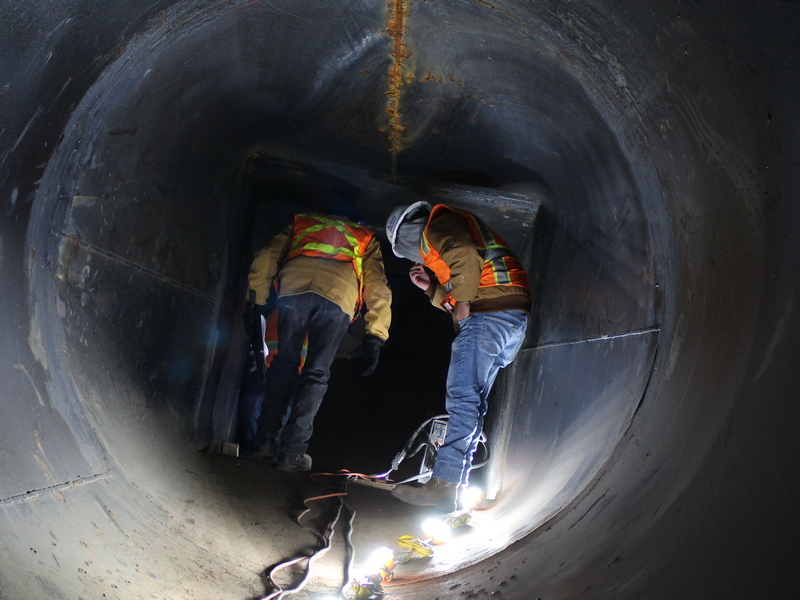
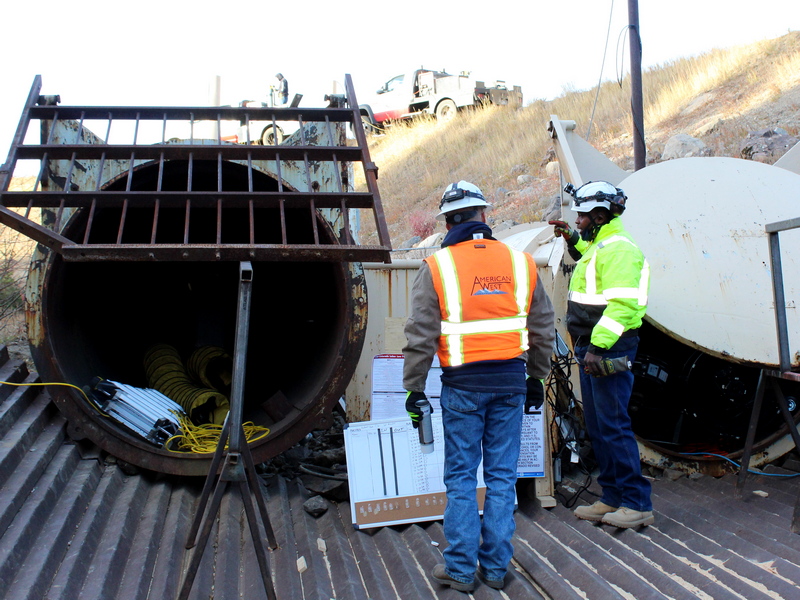
Trout Lake Dam Siphon Spillway Repair Location: Ophir, Colorado Client: Xcel Energy
The spillway siphon tubes required welding and grouting repair due to the failure of existing welds in the piping. These repairs were essential to ensure the functionality of the spillway in the event of lake flooding. In their damaged state, the siphons were not functioning properly and were allowing washout of dam embankment material, posing a risk of dam failure. This repair was reviewed and supported by the Colorado State Division of Water Resources – Dam Safety Branch and was recommended for completion in 2020.
The work involved cutting, grinding, or otherwise removing failed weld material and surrounding damaged areas. Backer plates were welded in place, and like-and-kind replacement material was fitted and welded at all failed and repaired weld joints. Grout injection ports were installed along the pipe alignment to allow for grout injection between the siphon pipe and embankment fill. After grout application, the siphon grout injection ports were welded closed. All welds were full penetration welds. Upon completion of welding and grouting activities, an approved coating material was applied to the weld repair areas and other designated areas. The work was performed underground in the siphon tube, with varying diameters (60” to 72”) and interior configurations. Primary ingress and egress were from the North end of the pipe, with secondary ingress and egress from the South end. The work area was considered a confined space.
A change order included internal bracing of the siphon tubes to safely complete grouting of the annular space between the tubes and embankment.
Test
The spillway siphon tubes required welding and grouting repair due to the failure of existing welds in the piping. These repairs were essential to ensure the functionality of the spillway in the event of lake flooding. In their damaged state, the siphons were not functioning properly and were allowing washout of dam embankment material, posing a risk of dam failure. This repair was reviewed and supported by the Colorado State Division of Water Resources – Dam Safety Branch and was recommended for completion in 2020.
The work involved cutting, grinding, or otherwise removing failed weld material and surrounding damaged areas. Backer plates were welded in place, and like-and-kind replacement material was fitted and welded at all failed and repaired weld joints. Grout injection ports were installed along the pipe alignment to allow for grout injection between the siphon pipe and embankment fill. After grout application, the siphon grout injection ports were welded closed. All welds were full penetration welds. Upon completion of welding and grouting activities, an approved coating material was applied to the weld repair areas and other designated areas. The work was performed underground in the siphon tube, with varying diameters (60” to 72”) and interior configurations. Primary ingress and egress were from the North end of the pipe, with secondary ingress and egress from the South end. The work area was considered a confined space.
A change order included internal bracing of the siphon tubes to safely complete grouting of the annular space between the tubes and embankment.
Trout Creek
The spillway siphon tubes required welding and grouting repair due to the failure of existing welds in the piping. These repairs were essential to ensure the functionality of the spillway in the event of lake flooding. In their damaged state, the siphons were not functioning properly and were allowing washout of dam embankment material, posing a risk of dam failure. This repair was reviewed and supported by the Colorado State Division of Water Resources – Dam Safety Branch and was recommended for completion in 2020.
The work involved cutting, grinding, or otherwise removing failed weld material and surrounding damaged areas. Backer plates were welded in place, and like-and-kind replacement material was fitted and welded at all failed and repaired weld joints. Grout injection ports were installed along the pipe alignment to allow for grout injection between the siphon pipe and embankment fill. After grout application, the siphon grout injection ports were welded closed. All welds were full penetration welds. Upon completion of welding and grouting activities, an approved coating material was applied to the weld repair areas and other designated areas. The work was performed underground in the siphon tube, with varying diameters (60” to 72”) and interior configurations. Primary ingress and egress were from the North end of the pipe, with secondary ingress and egress from the South end. The work area was considered a confined space.
A change order included internal bracing of the siphon tubes to safely complete grouting of the annular space between the tubes and embankment.

